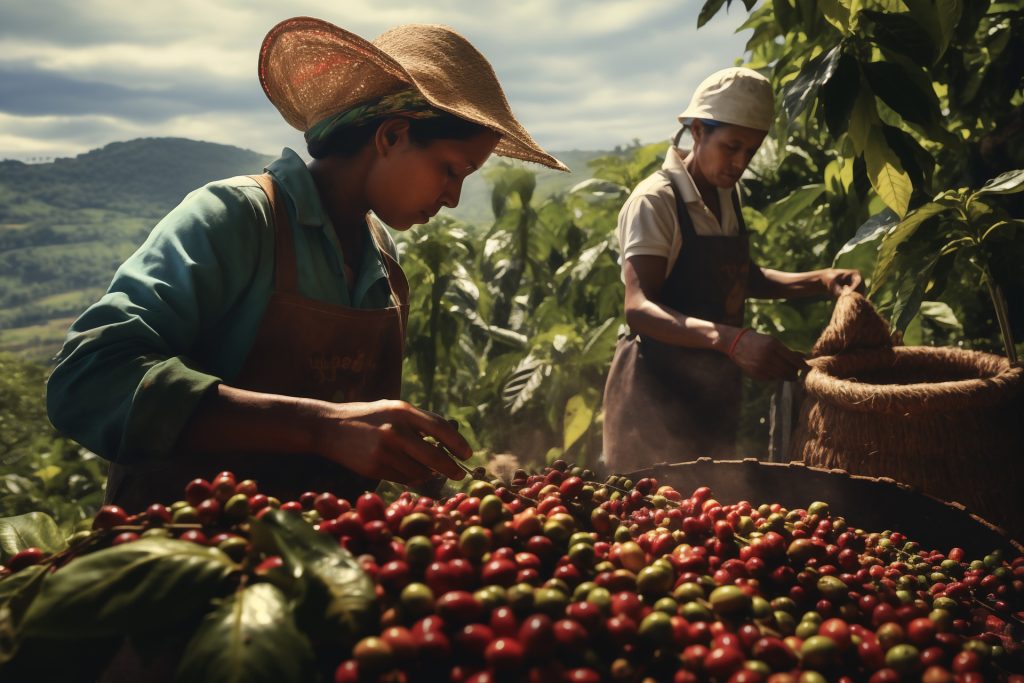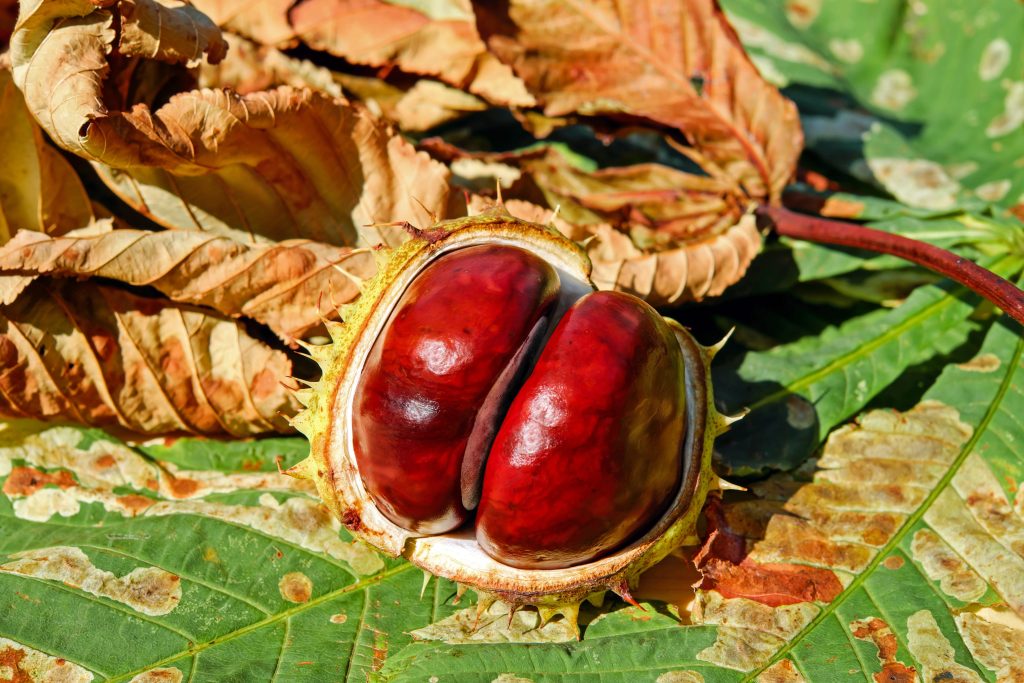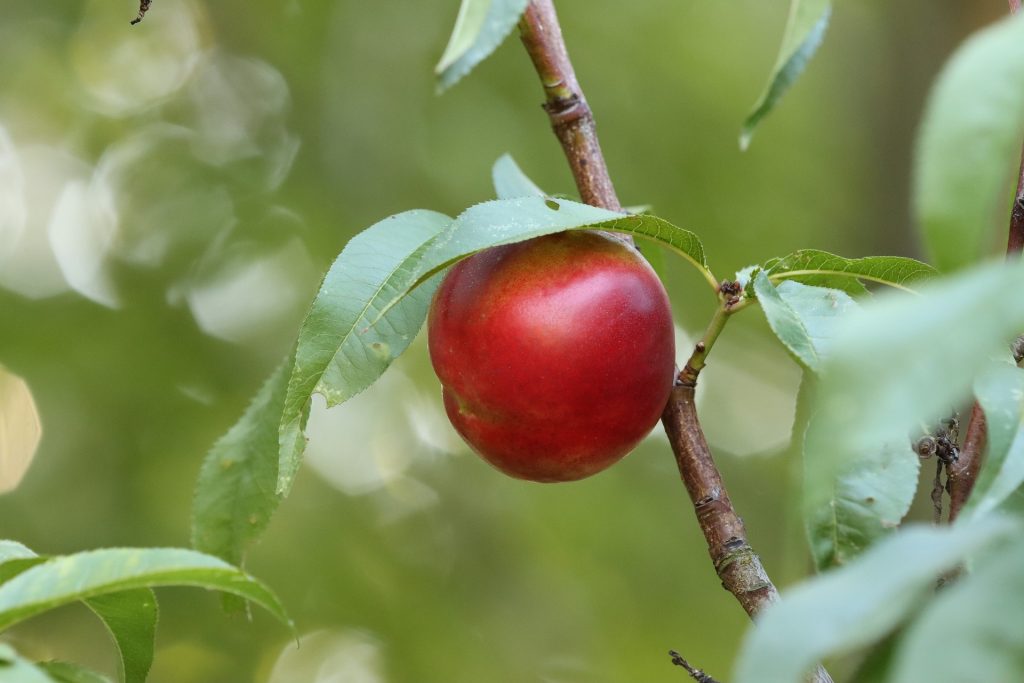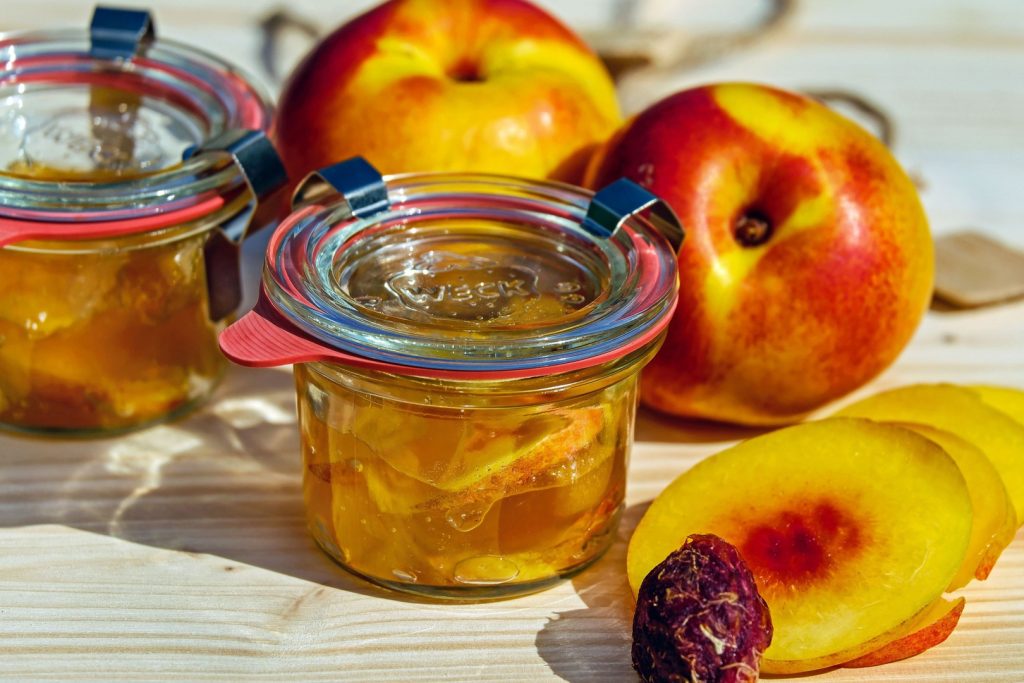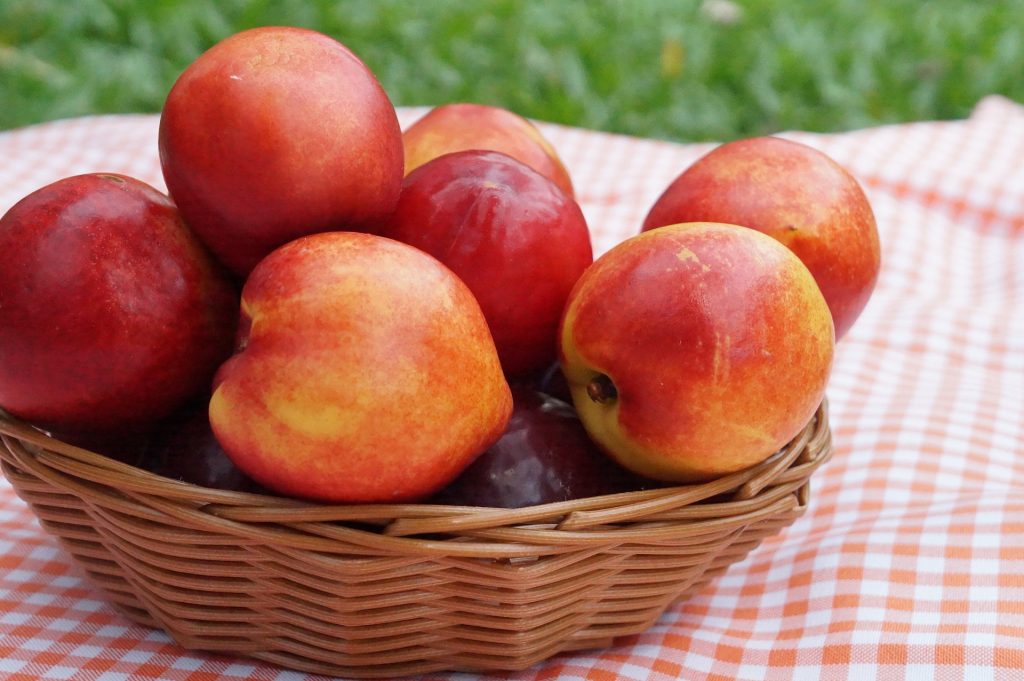Blog
Find articles that matter. From trading to shipping, trends to valuable goods, you can deep dive into everything you need.
Latest Posts
Blog
Pumpkin, a plant belonging to the Cucurbitaceae family, is a fibrous fruit. This fruit, whose homeland is North America, is suitable to be grown all over the world. Since it is used in many desserts and dishes, its production and export are also high.
Pumpkin, which started to be grown in North America, has a 5000-year history. When it was first produced, its consumption area was very narrow. However, in the following years, its market expanded and its production increased along with trade. The People's Republic of China has been the country that both produces and consumes the most pumpkin for many years. It is highly preferred because it is a plant that is very easy to care for and offers a lot of production space. When suitable conditions are provided, yields can be obtained for many years.
Pumpkin, which has an important place in the world market, has producers from all seven continents. What is the export area as well as the production area of the pumpkin, which has been the protagonist of the kitchen industry in recent years? Which countries lead the world in pumpkin export?
Spain
The pumpkin, which attracts attention with its colorful appearance, has also become the apple of the eye of Spain. Spain, which has increased its production especially since the 1900s, became the country that exports the most pumpkin in 2021. The country, where many varieties are grown, earned $542 million from pumpkin exports. Spain met 34.9% of the pumpkin exported in the world market in total.
It is estimated that Spain will take first place in 2022. Spain has a great interest in orange pumpkins, which are also used in the decoration industry.
Mexico
The earliest pumpkin seeds ever discovered were discovered by researchers working on a tomb excavation in central Mexico, and they date to 7000 BC. Botanically classified as a fruit rather than a vegetable, pumpkin has been cultivated in the Tehuacan and Oaxaca valleys and Tamaulipas since 6000-5000 BC. The 2021 statistics, also emphasized the variety of its past experiences with the Mexican pumpkin. Mexico exported pumpkins for $394.1 million, more than enough to cover domestic consumption.
According to Mexican producers, both production and exports are expected to double in 2022.
Netherlands
With its fertile lands, the Netherlands, which is becoming more and more prominent in agriculture, experiences the same enthusiasm for pumpkins. Especially Netherlands pumpkins, which are the subject of world news with the pumpkins they produce over 150 kilos, are also expanding in terms of their production network. According to 2021 data, the Netherlands generated $69.6 million in pumpkin exports. Thanks to their large planting areas, they export the pumpkins they produce in huge sizes, as well as the very tasty normal-size pumpkins.
Bringing new hopes to each season, the Netherlands has targets to develop its production and export networks in 2022 as well.
Turkey
Many vegetables and fruits are produced in Turkey's fertile soil. Turkey, which ranks fourth in pumpkin export, is gradually increasing its target in pumpkin production. Although the production is less compared to other countries, the fact that it can be included in the export list also reveals how high quality the pumpkin is. Turkey, which ranks fourth in the list according to 2021 data, exported $69.1 million.
Increasing its production by 34.5% compared to previous years, Turkey aims to be on the list of pumpkin exports in 2022.
United States
The pumpkin, the symbol of Halloween, is produced in many states of the United States. Illinois, in particular, tops the list in pumpkin production. In the United States, the priority is the use of pumpkins for decoration or carving. For this reason, less watery pumpkin production is available. Decoration-oriented exports are also carried out to other countries. The United States generated $57.6 million in revenue from pumpkin exports in 2021.
The United States, which wants to expand its scope on pumpkin production as the kitchen sector in 2022, ranks fifth on the list.
The Place of Pumpkin in the World Market
Pumpkin has great importance in the world trade market. Pumpkins, which can be used in a wide variety of ways, continue to be produced in many places around the world.
Decoration
The color orange, which is also described as the symbol of autumn, perhaps suits the pumpkin the most. One of the protagonists of special days such as Halloween and Harvest Celebrations is a pumpkin. It is exhibited as the head of decoration by carving and lighting. For this reason, both production and export are very common.
Culinary Culture
There is always a need for different tastes in culinary culture. Pumpkin, which is used in desserts, sauces, and even drinks, is used in many different varieties. Pumpkin, whose flavor can be adapted to almost any taste, is one of the main products of the kitchen industry.
Dried Vitamin
Dried fruits are very popular lately. The new dried product that helps diets and dessert decorations is dried pumpkin. Pumpkins, which are sliced and dried in thin strips or dried in cubes, are exported to other countries. Especially countries that cannot reach dried pumpkins due to climatic conditions import dried pumpkins from many countries, especially Turkey.
From small to large, from fresh to dried, pumpkin has an important place in the world. The market framework of pumpkin, which is consumed for many purposes and in many varieties, is expanding.
It is not difficult to reach the quality pumpkins of Turkey with Turkish Goods. You can also contact Turkish Goods, which delivers many products, especially pumpkin, from the best producers to every corner of the world. Get service with both confidence and quality.
There are numerous notable concepts in global trade. International transportation delivery techniques are structured in such a way that the buyer and seller have specific responsibilities. FCA and CIF are two of the 11 delivery systems utilized worldwide. What are the distinctions between the FCA (Free Carriere) and CIF (Cost, Insurance, and Freight) concepts?
What is Cost, Insurance, and Freight (CIF)?
Cost, insurance, and freight (CIF) is an international shipping term that refers to the expenses that include carriage and insurance paid by the seller while the cargo is on its route to the port of origin. The import process and the costs associated with clearing the shipment and delivering the products to the final destination are indeed the responsibility of the buyer.
How is the CIF delivery method done?
CIF is commonly utilized for large, oversized, or heavy shipments. Cost, insurance, and freight are solely applicable to sea or water shipments and do not apply to other forms of transportation. This transportation technique is most commonly applied when shipping full containers.
The items are shipped to the destination port in the sales contract. Any loss or damage to the product remains the seller's responsibility until the goods are delivered to the destination port. When the products arrive at the port of destination, the buyer is responsible for any fees or expenses associated with unloading and conveying the cargo to the final destination. Furthermore, the buyer is liable for the cost of the goods, import clearance and related costs, and shipment from the point of origin.
What Are the Responsibilities of Buyers and Sellers in CIF Agreements?
CIF specifies the seller's liability for delivering the goods to the buyer. The seller is responsible for obtaining export approvals for the product. The seller should cover the cost of any damage or destruction to the items, and provide product inspections. When the items arrive at the port of destination, the buyer becomes responsible for the costs of importing and delivering the commodities. The buyer’s responsibilities are covering the unloading of the product at the port terminal, as well as the customs tax costs and importing of the products.
What is Free Carrier (FCA)?
FCA is the abbreviation of the term Free Carrier. It means that the seller delivers goods to the carrier by stating the location of delivery in his country in international trade. FCA is known as a mode of transportation in which the buyer bears the majority of the responsibility.
How is the FCA delivery method done?
Under FCA, the seller provides the products to the transport company, which is packed in line with international transport regulations. The seller provides the necessary information for delivery by identifying the delivery location. In the meantime, the seller is accountable for all procedures, including local shipping expenses and export requirements. The seller's obligation is to deliver the products completely to the carrier selected by the buyer. After completing the relevant formalities, the seller transfers the goods. With the transmission of the products, the buyer assumes full liability. The FCA delivery method can be defined as a delivery method in which the risks are undertaken by the buyer.
What Are the Responsibilities of Buyers and Sellers in FCA Agreements?
The seller is principally obligated in this mode of delivery to prepare the goods under the order as required. Some items necessitate specific packaging and packing, whilst others do not. The packing procedure differs based on the product. According to international dangerous goods shipping regulations, it is the seller's responsibility to control the quality of the goods.
During the export of the goods, the seller who prepares the goods provides the relevant permits. The seller's responsibility ceases after the customs processes are completed and the paperwork is delivered. Product delivery occurs at the location agreed upon with the buyer's shipping firm. Expenses such as internal transportation and loading incurred prior to delivery are entirely the seller's responsibility.
All risks pass to the customer after the seller delivers the items. As with other kinds of delivery, it is the buyer's responsibility to pay the price of the products as agreed in the contract. Any damage incurred in transit is the buyer's responsibility. In order to decrease the chance of such occurrences, the buyer obtains products and transportation insurance. The buyer is also responsible for customs and tariffs in the country where he is located, in addition to the freight cost.
What are the Differences Between Free Carriere (FCA) and Cost, Insurance, and Freight (CIF)?
The seller is responsible for the delivery and shipment manner agreed upon in advance with the customer in FCA delivery mode. Regarding that, the buyer assumes accountability. The seller is responsible for all costs until the goods arrive at the point of destination under the CIF agreement. When the products are ready for transport, the customer bears all risks.
Another distinction is the variation in transportation routes. CIF is a limited delivery regulation that is exclusively applicable for products transported by water. However, FCA delivery standards apply to all modes of transport, including land, sea, and air. Under CIF conditions, the exporter covers the majority of the transportation costs and has complete control over the freight. Nevertheless, under FCA regulations, the exporter has no control over the major mode of transportation.
The exporter is required to cover the costs of shipping the products to the specified location in the importer's country under the CIF delivery terms. However, under FCA terms of delivery, the exporter covers the expense of the products' transportation when they are loaded onto the carrier specified by the importer.
Wheat is one of the oldest cultivated plants in the world. It is a herbaceous plant belonging to the Gramineae family and is in the genus Triticum. It is a basic food that enables humanity to survive. Wheat, which has been very valuable to people for centuries, is a plant of strategic importance. Nowadays, the Russia-Ukraine War has once again proved the importance of wheat. The security and independence of a country are directly related to the ability of its population to meet its food and energy needs.
Wheat is valuable both because it is used in animal husbandry and because it is an essential food for humanity. Turkey is among the countries producing this important food. It is an agricultural country and has fertile land. Turkey both produces and exports wheat. In this way, Turkey has an important position in the world regarding wheat. In this article, detailed information about wheat cultivation and export in Turkey is explained.
Importance of Wheat
Wheat is one of the basic and indispensable food products of humanity. With the transition of humanity to agricultural life, wheat production also started. Many basic foods such as flour, starch, and bulgur are produced from wheat. The main ingredient of bread, pizza, pastries, and many packaged foods is wheat. Besides, wheat is also used in animal husbandry. Wheat is the staple food of animals. In addition, it is made from the stalks of wheat in the manufacture of paper and cardboard.
Wheat production and sufficient wheat stock are of strategic importance for every country. In particular, during the Covid-19 pandemic period, people have made excessive demands for products whose raw material is wheat. Therefore, after Covid-19, the cultivation areas of wheat have been expanded and the amount of agricultural support has increased. Finally, wheat is a very important food product in terms of food security.
Wheat Cultivation in Turkey
Turkey is one of the most important countries in wheat cultivation in the world. Turkey is a country with fertile land and climate diversity. In this way, strategically important wheat is also grown in Turkey. In addition, wheat cultivation in Turkey is supported by the Ministry of Agriculture and Forestry.
According to the data from the Turkish Statistical Institute, Turkey's wheat cultivation area constitutes 3.2% of the world wheat cultivation area in 2020-2021. Wheat covers 44% of the total cultivated grain area in Turkey. Turkey's wheat cultivation area is 69.2 million decameters in 2020-2021. The first ten provinces that generate 42% of this area are as follows; Konya, Şanlıurfa, Ankara, Diyarbakır, Yozgat, Sivas, Tekirdağ, Çorum, Kayseri, and Mardin respectively. Especially, Konya is the province known as the granary of Turkey. The climate of Konya is suitable for growing wheat. Therefore, Konya is the production center of wheat.
Wheat Growth in Turkey
It is one of the most grown agricultural products in Turkey. Wheat, which has a substantial space in the agricultural sector, is an essential agricultural product for Turkey. It is an easy crop to cultivate and it grows faster in hot and arid climates. The regions where wheat is suitable for growing in Turkey are the Mediterranean and Southeastern Anatolia.
Wheat Production in Turkey
Compared to the previous season, about a 1% increase was observed in the cultivation area of wheat from 2020-2021. Also, the efficiency of wheat increased by 6.6%. Depending on these increases, wheat production increased by 7.9% in 2020-2021 and wheat production reached 20.5 million in total. About 80% of the domestic use of wheat is used in the food industry. The leftovers are used in the feed industry and as seeds.
Wheat Export in Turkey
Wheat is an agricultural product that is affected by the social, economic, and security problems happening throughout the world. In 2019, there was an unprecedented covid-19 pandemic that affected the whole world. This pandemic has negatively impacted supply chains. People have shown excessive demand for products whose raw material is wheat. Also, sometimes the flour and pasta shelves in the markets were empty. Excessive demand caused wheat prices to rise rapidly.
In addition, the Ukraine-Russia war, which started in the first months of 2022, adversely affected the production and supply chain of wheat. The reason for this is that Ukraine and Russia are among the important countries in wheat export. Due to the war, there were serious problems in the supply of wheat. A grain corridor was created under the leadership of the United Nations to provide the supply of wheat, which is the essential food of humanity.
Also, Turkey is among the countries that will ensure the security of this grain corridor. In short, all these things prove that wheat is a very significant agricultural product. For this reason, it is important to be a wheat-producing and exporting country. Turkey is among the countries that export wheat in the world.
Statistical Data on Wheat Export
According to the wheat report published by the Ministry of Agriculture and Forestry in June 2021, Turkey has a share of 3.3% of world wheat exports in the 2020-2021 period. Turkey exported 6.6 million tons of wheat in 2020/2021. Iraq, Venezuela, Yemen, and Somalia are the leading countries to which Turkey exports wheat and wheat products.
In the 2020/21 production season, 58.6% of Turkey's wheat export consists of wheat flour and 34.3% of pasta. Other products consist of 6% biscuit, 0.3% bulgur-semolina and 0.8% wheat. The most important food product produced from wheat is undoubtedly flour. Turkey is among the countries in the first place in wheat flour export in the world. In the first six months of 2022, 1.35 million tons of flour were exported and a revenue of 652 million dollars was obtained. Iraq, Syria, Yemen, Venezuela, and Libya are among the countries where Turkey exports the most flour. Also, Turkey ranks first in the world's pasta export. Turkey exported pasta to 160 countries in 2021 and 1 million 370 thousand tons of pasta in total.
One of the most crucial issues in the world is market research. Both people who desire to receive the service and those who supply it value its importance. Every aspect of a product, from the advertising strategy to the suppliers, is subject to research in addition to its quality. Business owners or start-ups need in-depth market research, particularly when it comes to foreign markets. What exactly is market research, and why is it crucial? What's more, how do you conduct market research?
Market research is the process of determining whether a new good or service is viable through interviews with potential customers. Organizations or corporations can use this technique to research their target markets and come to informed judgments. Companies that embrace this industry can conduct market research for the organization that needs it directly.
Of course, instead of contracting with these companies, you can also choose to do the market research yourself.
The main goal of market research is to comprehend or examine the market for a specific good or service to predict how the target market will respond. The quality of the service or potential product improves as a result of market research.
What Are the Types of Market Research?
As market research includes certain steps, it can be divided into two types according to the stage criteria of the research. A market research study can be primary and secondary, or it can include components of both depending on your company's goals and the industry you intend to research.
Primary Research
Performing primary research entails obtaining first-hand knowledge of the market and its consumers. Surveys are carried out in this kind of study based on the standards established by the company. Primary research has been effective in identifying buyer personalities and segmenting target audiences.
Secondary Research
All currently available publically accessible data and papers make up secondary research. Industry trend studies, market figures, various kinds of content, and sales information from the company are a few examples of these documents. Secondary research makes it easier to see trends and study competition.
Note: The source of the data is what distinguishes primary research from secondary research. In secondary research, already completed tests and questionnaires are assessed using standards established by the researcher before being used.
Lean Market Research
Lean market research is more concerned with how the complete research process is carried out than the quality of the information used as a source. It is, in a sense, the core research methodology. Examining the findings of earlier research is the goal of lean market research. It directs the fresh, exhaustive market study that will be conducted. However, relying solely on and utilizing lean market research can be dangerous. Because the market is always changing and there are innovations. Therefore, it is important to turn to primary and secondary research by making use of lean market research to see an up-to-date impact reaction.
5 Steps to the Best Market Research
After having a general knowledge of market research, another important issue is the stages. Market research is a comprehensive process. The better you can manage this process, the more efficient your research process will be.
1. Note Your Request
Always, the opening phase sets your research. To ascertain the desires of the target audience, it is crucial to start by asking the correct questions and planning the questions you will ask. When posing queries, researchers will benefit from having a clearly defined research topic. These queries ought to be problem-solving-based and project-specific. Ensure that the questions are understood by the respondents and are written clearly. Be sure to capture your desires and interests in writing and utilize them to inform your research audience. Having a specific plan, both within the scope of the product and the scope of the service will always make you a professional.
2. Product Development and Identification to Meet Expectations
Once you have determined the essential traits of customers, you should use this knowledge to pinpoint the precise demographic you want to interview. This group ought to comprise a representative sample of the target market if the decision was made correctly. Your criteria are determined by the product you will put on the market or by how people respond to it. Additionally, you will choose which suppliers and customers you like when conducting market research for your product. Your company requires an identity, to put it briefly. You must specify expectations and what you are capable of delivering.
3. Research Your Competitors
Prepare a prospectus that lists and describes each significant rival. Determine each competitor's advantages and disadvantages, financial condition, and level of respect. Investigate the techniques or middlemen they employ in their operation. Improving oneself requires being aware of what your rivals are doing. So why is this step of market research required?
Because evaluating a product or service follows the same procedures as your rivals. Customers group you into different categories based on your rivals. As a result, classifying oneself in market research also entails classifying your competitors. And you take action after recognizing your flaws.
4. Analyze Results
The goal here is to create a summary document in which you can organize the results of the market research. At this stage, both the surveys of the customers participating in the research and the summary of your other research results gain importance. Because all data is collected. In addition, by getting information from all departments in your business, new markets that you can enter or issues that you need to develop emerge. The best analysis is possible with results where you can see all the details.
5. Combine Results with Technology
Even in the case of market research, data is the most valuable resource. Developing and optimizing this and using this data in subsequent marketing processes will make you stand out. Document management processes make it possible to use information from heterogeneous sources and allow you to turn this information to your advantage in the best way. In this way, your solutions to both your needs and the situations you encounter will increase. If you use technological developments with analysis results, you can easily manage your future market research.
Communication, advertising, and analysis are the most important elements in market research. If you can use them enough, you will easily meet both your own needs and the expectations of your customers. Your product needs, freight services, and foreign market relations are important in the development of your business.
At this stage, you can benefit from Turkish Goods' quality supply network and products. Emphasize quality in your market research while combining knowledge with research.
Turkey and the USA are allied countries with long-standing and extensive relations. Turkey and America relations, especially after World War II, strengthened and expanded both economically and politically. In fact, the bilateral trade volume exceeded 27 billion dollars in 2020. The common aim between the two countries is to increase the trade volume to 100 million dollars. Also, the USA is an important market for Turkey's food industry. According to current data, the USA ranks fourth in the list of countries importing food from Turkey. The USA realizes record levels of food imports from Turkey every year. In this article, we have compiled for you all the details of how you can import food products from Turkey to the USA.
The US Food and Drug Administration
The USA imports food products from many countries of the world. Turkey is an important commercial partner of the USA in the food sector. FDA is a substantial institution to be known when importing food products from Turkey to the USA. The FDA is responsible for any regulation regarding the import process of food products entering the United States.
The most important criterion is to deliver the products safely to the USA. All import processes in the food industry must be carried out under the import regulations set by the FDA. It is possible to access the extensive rules set for each food product on the FDA website. It is possible to import food products to the USA from Turkey following these regulations.
Process of Importing Food Products from Turkey to the USA
Import processes are carried out according to certain rules and regulations. Each country sets its standards and rules. The sending country is obliged to carry out the import process by all the rules of the relevant country. In case of a break of the determined rules, the import process may be delayed or the import may not occur. In order to import food products from Turkey to the USA, it is essential to know the legal regulations of the USA well. Let's examine these rules and learn how to import food products.
Step One: Prior Notice
The most important step after learning the regulations on the FDA website is to file a Prior Notice. Prior Notice is an electronic application filed through the FDA's website. There is important information that should be stated in the application. Examples of these are country of production, estimated arrival details, shipper’s information, carrier and method of transportation, and FDA product code.
The Prior Notice must be completed at least 2 hours before arrival and at the latest 30 days before. If Prior Notice is not reported or there is incorrect information, you may have a problem with the entry of food products. And also, food products may be denied entry into the country. The most important first step in importing food products to the USA from Turkey is to send the Prior Notice promptly. Therefore, this step should not be skipped.
Step Two: FDA Registration
All foreign partners must be registered with the FDA for the smooth processing of food product imports. Registration in the FDA system is required according to the regulations of the FDA’s system specified in the Foreign Supplier Verification Program (FSVP). All foreign manufacturers, suppliers, and distributors must register with the FDA system. The FSVP system enables foreign partners to realize the import process following all FDA requirements.
Step There: Prepare Bill of Lading
A Bill of lading is an important document regarding import processes. This document has multiple purposes. Examples of these aims are determining the title of the goods, the contract of carriage, and the proving receipt of the goods. The bill of lading must be prepared by the sender or the shipping company.
Step Four: Commercial Invoice
One of the most important documents in commercial transactions is undoubtedly the invoice. A commercial invoice must be present during the import process. The commercial invoice contains detailed information about the sale of the shipped food products. All information shown on the commercial invoice is controlled by the US Customs and Border Protection agents. CBP agents check these commercial invoices to calculate and verify import duties. Incorrect information on the commercial invoice will result in a longer inspection period.
Step Five: Packing List
The packing list contains most of the information found on the commercial invoice. A packing list is needed when importing food products from Turkey to the United States. The packaging contains shorter and specific information. In particular, the sizes and quantities of food products sent should be included in this list. The information that should be included in the packing list is as follows:
- Specific dimensions of each package,
- Number of packages in the shipment,
- Quantity and description of goods,
- Total weight of all combined packages,
- Invoice numbers of shipped products.
All this information should be transmitted electronically to CBP.
Step Six: Customs Bond
In order to import food products to the USA from Turkey, the import must be covered by a customs bond. CBP requires customs bonds for all commercial shipments to the USA. A customs bond is a financial guarantee that all import taxes and fees will be paid to CBP.
Last Step: Entry Summary
The last document required to import food products from Turkey to the USA is the entry summary. The entry summary is officially called CBP Form 7501. This document includes a combination of almost all the information found in the commercial, invoice, bill of lading, and packing list. In addition, it contains additional information such as the type of receipt of goods, type of bond, and estimated tax. This document is a critical document for the import process. Therefore, it should be fully completed.
Import of Packaged Food Products to the USA from Turkey
If you are importing packaged food products from Turkey to the USA, you must comply with the labeling rules. These rules are set by the FDA. Food products such as all types of packaged products, baked goods, and seafood should be labeled with appropriate information. This information includes country of origin, nutritional information, and ingredient information. Depending on the packaging size of the product, the labeling format also varies.
Import Food Products from Turkey to the USA with Turkish Goods’ Quality Service
Each country has its own legal regulations and rules in international trade. The Import must be carried out in accordance with these rules and laws. Therefore, the import process is complex and difficult in many respects. Turkish Goods supports you at every stage of your import process with its expert teams and experience. By working with Turkish goods, you can carry out your import process without any problems. Click here to get support from our expert team for any questions.
If you have a business where you need to use the freight service all the time, subtle nuances shape your choice. Choosing freight providers with the right service and quality business understanding is not a matter that can be decided only by recommendation.
You need to be conscious of everything from the route of your shipments to pricing. So how do you choose the right freight provider? To come to the right conclusion on this matter, you need to consider many details. Here are the tricks you need to consider when deciding on the freight provider:
Detailed Research
You'll be saved from logistics problems by a thorough investigation. Take note of your company's requirements before you start looking for a freight provider. It is crucial to consider the types of services your company will want within the context of shipping, as well as the amounts you intend to send. The course of your business will also be positive with the right orientation.
Care about Real Experience
The most significant element is holding a reputable position in the industry. Experience is, without a doubt, the factor that determines reputation the most.
Verify that a shipper is a WCA-approved member if you are concerned about their reputation and dependability. You have access to the expertise and experience of freight thanks to this logistics partnership network, regardless of how reliable the freight firm is. Moreover, you can find information on this topic using a variety of web tools. You can uncover more business reviews of freight providers you are considering doing business within your country or the global market.
There are a few specifics to be aware of when it comes to the experience of a shipper. You need to know if your partner has the industry expertise to negotiate the laws and regulations in both the country of origin and the country of destination if you're dealing with import and export customs. To prevent future issues or penalties is a huge duty.
A Good Network
Relationships within the shipping sector are essential. Connections in the maritime sector, communications in the aviation sector, and many more are required. These websites assist shippers in negotiating better rates with carriers and more effective local government and paperwork routing. In essence, you get good service from seasoned freight suppliers with a strong communication network.
In addition, the communication networks of freight providers using technology are also strong. It has an extensive supply network in both digital dimensions. It also deals with its resources and you in a versatile way in terms of communication.
Choosing providers that have been directing their communication on a local and international basis for years and positioned their business in this direction also gives you the advantage of time. Having a strong network is as important as knowing their job. Your work will be done both in high quality and fast.
Risk Management Experience
Transportation is known worldwide as an unstable issue. We can say that transportation is a sea of complexity, especially when it comes to multifaceted and complex freight services. Especially if two or three different transportation methods are to be used, question marks come into play about the transportation of products.
Because of this, you require a transportation firm with the expertise to handle issues as they arise and the ability to mitigate risks, particularly transportation hazards. If your freight supplier can think quickly and present you with solutions, you will be completely taken care of. Cargo insurance is one method of risk minimization. Ask about the available cargo insurance upfront because it could be expensive to expose your business to ordinary carrier liability.
Being solution-oriented also means being open-minded. If you work with a provider who does not take responsibility for even a small problem, communication problems will increase and you will also be psychologically worn out. So make sure you're dealing with people with whom you can communicate openly and who can embrace problems as well as questions.
Comprehensive Service
Do your products need cold storage? Or do you need a multimodal freight service for the transportation of your products? Do you want to see the route of the transported products, moment by moment?
Naturally, you have to have included these inquiries in your list of requirements when conducting the in-depth study. However, you must also decide how important the responses to these queries are to you. The capability of freight providers to offer these services is a crucial stage due to the variety of offerings. If you choose a local business because you want to make sure it's reasonable but your products are late or of poor quality, you'll suffer more financial losses. Would you like this?
The freight supplier needs to be able to give you the required documentation or have knowledge of it. For instance:
- Having invoices notarized on the sender's behalf
- Correction of document errors
- Getting certifications (insurance, inspection, etc.)
- Document preparation and review
- Helping with the clearance of customs
- Services for transport logistics
You should study the benefits these documents can provide you with in addition to learning about them. For instance:
- Negotiation of air, sea, and road freight experience
- The capacity to choose appropriate transport routes
- Planning for loading and packaging.
- Choosing the right freight insurance
Knowledge of the above-mentioned documents and applications are just a few of the important services in terms of organizing. Are these services not important to you as well? That's why; be sure to search for freight providers that offer comprehensive services.
Transparent Pricing Guarantee
You won't experience unexpected pricing while working with freight providers who follow a price-transparent approach. In some cases, you can see that the suggested total freight price isn't clear and that the expenses are combined. You might not even be aware that shipping companies are charging you brokerage fees or fuel surcharges. It will be easier for you to budget if you can find a freight provider with a clear pricing structure.
You can choose the right choice for you. When choosing a freight provider, be sure to review all of the above-mentioned steps. Clear rules are important for happy results. You can upgrade your business life in line with your planning. That's why contacting the right freight providers means you're applying the right strategies to your own business as well.




